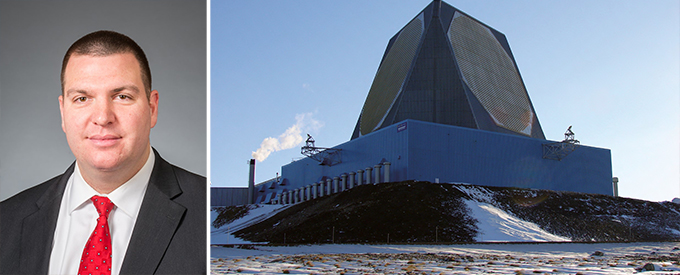2022-10-01
Raytheon Missiles & Defense’s EWR Acts as (The Big Eye, Always Watching)
Raytheon Missiles & Defense offers some of the world’s most advanced end-to-end solutions delivering the advantage of detecting, tracking, and intercepting threats. One of these solutions is the Early Warning Radar (EWR), a cornerstone of missile defence for the U.S. and its allies. It can detect ballistic missile and air-breathing threats from non-threats and deter potential attacks.
In an interview with Matthew Krempin, Product Line Director for Early Warning pursuits, Raytheon Missiles & Defense, discusses EWR’s primary mission areas and what is being done to keep the system capable of dealing with evolving threats.
What sets the Early Warning Radar (EWR) apart from other sensors?
For decades, EWR has been the cornerstone of U.S. nuclear deterrence, given the immense range and computational power. EWR is the only radar in the world capable of sensing a Mass Raid of more than 1,000 objects simultaneously at a range of over 5,000km. It is the world’s most powerful and well-proven early warning radar.
What about the EWR’s operational capability?
EWR has the ability to track missiles beyond 5,000 km—outside the atmosphere and, most importantly, far from wherever the attack is headed. It provides early detection and precise tracking of incoming attacks and classifies space objects, meaning it can distinguish quickly between a threat and a non-threat. That’s why it’s known as “the big eye, always watching.”
Does the EWR integrate with other solutions?
As a systems integrator, Raytheon Missiles & Defense has ensured EWR is interoperable with the AN/TPY-2 radar, Global Patriot Solutions, Lower Tier Air and Missile Defence Sensor, or LTAMDS, and the Terminal High Altitude Area Defence, or THAAD – and has done so in a cyber-hardened environment.
Is the EWR suited for all regions?
It is ideally suited for the Middle East. The EWR operates in the ultra-high frequency band, or UHF, which has several advantages over S-band radars, including the ability to simultaneously track and classify a greater number of targets at the same time. And they require a lot less power to operate. This makes EWR the ideal complement to existing assets in Middle Eastern countries.
What are the primary mission areas of the EWR?
The EWR performs four missions.
• Early warning and attribution: The EWR can warn of a missile threat and find its launch point up to 20 minutes before it happens. That creates a deterrent effect; adversaries know they are not hidden, even from far away, and that a retaliatory attack is possible.
• Integrated air and missile defence: As part of an integrated, layered missile defence architecture, EWR is the cornerstone sensor that provides persistent, 360-degree defence and gathers precise tracking data and queues fire control radars and their effectors, improving overall national level missile defence effectiveness.
• Space domain surveillance: Tactical Ballistic Missiles (TBMs) can have trajectories that enter Lower Earth Orbit (LEO), where there are thousands of objects. EWR is able to differentiate TBMs from satellites better than others due to EWR’s long-range that allows horizon-to-horizon tracking to ensure threatening objects are addressed and non-threatening objects are not. With 6,000 satellites in orbit now and that number expected to triple in the next 10 years, keeping satellites safe during commercial flights is also vital.
• Volume air surveillance and tracking: Commercial airspace is increasingly congested, making it especially important to tell the difference between friendly and adversary aircraft. The EWR makes that distinction while helping to coordinate, communicate and prioritise threats.
When was the EWR first introduced, and what is Raytheon doing to keep the system capable of dealing with evolving threats?
For more than 25 years, the EWR has performed missile warning and missile defence missions, and the U.S., along with allies, have continually invested in the system to keep it ahead of emerging threats. One of those long-term investments is the solid-state transmit-and-receive module made with the powerful semiconductor gallium nitride or GaN. That module delivers more capability and better energy efficiency, lowering operational costs. Other advancements include software updates that improve surveillance, tracking and object classification.


No Comments